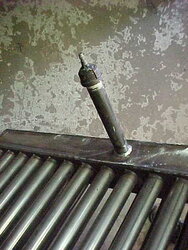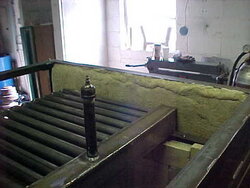I
ISeeDeadBTUs
Guest
I'd like to get two more years outta' the green beast, at which point I think I'd feel economically satisfied. For now, nevermind what decision I'll make when I do replace the GW100.
Ok, so she sprung a leak in the iron nipple coming out of the heat HX at the front of the boiler. As I suspected, the corrosion was from the OUTSIDE IN, not from the water side.
I took the top cover off. The insulation is still stuck to the top at the moment, but I did find rust through the cover in one spot other than the HX hole. Seems that creosote is some seriously caustic compound!!
Ok, so it looks like the next step will be to remove the HX, which means ripping the back off the beast.
I'm trying to picto-document the operation, if nothing else, to aid me in remembering how the parts go back together.
http://youarehere061.vox.com/library/post/greenwood-tear-down.html
A couple of questions for the Seton/Greenfire/Green Horizon guys . . . doesn't someone make SS skins with cleaning access for these? And does anyone know if your HX is the same dimensions as my GW100?
Jimbo
Ok, so she sprung a leak in the iron nipple coming out of the heat HX at the front of the boiler. As I suspected, the corrosion was from the OUTSIDE IN, not from the water side.
I took the top cover off. The insulation is still stuck to the top at the moment, but I did find rust through the cover in one spot other than the HX hole. Seems that creosote is some seriously caustic compound!!
Ok, so it looks like the next step will be to remove the HX, which means ripping the back off the beast.
I'm trying to picto-document the operation, if nothing else, to aid me in remembering how the parts go back together.
http://youarehere061.vox.com/library/post/greenwood-tear-down.html
A couple of questions for the Seton/Greenfire/Green Horizon guys . . . doesn't someone make SS skins with cleaning access for these? And does anyone know if your HX is the same dimensions as my GW100?
Jimbo


 !! Just fix the defect you have.
!! Just fix the defect you have.
